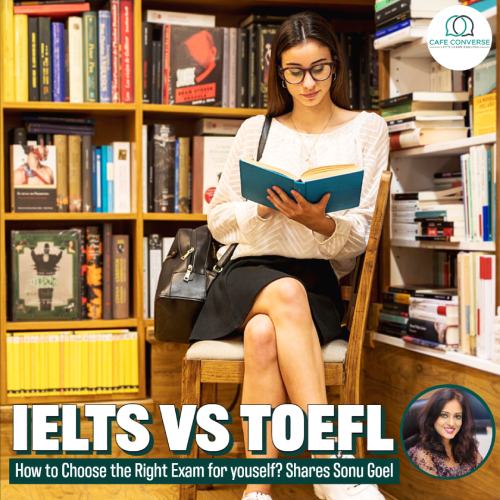Shares Delhi’s Leading Institute for IELTS Cafe Converse
IELTS, the International English Language Testing System, is a globally recognized language proficiency exam. It assesses individuals’ English skills for academic and immigration purposes. In today’s interconnected world, where English is a dominant medium of communication, IELTS plays a pivotal role in determining language readiness for international studies and work opportunities. IELTS Academic is for studies, while IELTS General Training is for immigration.
Once you have cracked the exam with flying colors, IELTS will send you the Test Report Form (TRF) or electronic Test Report Form (eTRF) that is valid for two years from your test date. The next step is to send the scores to your dream universities across the shore. Cafe Converse, explains the procedure of sending the scores in this article.
1. Score Interpretation
IELTS scores, ranging from 0 to 9, reflect your language proficiency in listening, reading, writing, and speaking. Different universities have varied score requirements, so research your desired institutions to ensure you meet their criteria.
2. Study Your Options
Different universities have different preferences when it comes to receiving your IELTS scores. Some universities may accept electronic scores directly from the test center. Others might need a physical copy mailed to their admissions office. It’s like picking the right tool for the job – you wouldn’t use a hammer to tighten a screw, would you?
a. Sending Scores Electronically
Many universities today allow you to send your IELTS scores electronically. The process is simple.
- Just log in to your IELTS account and click on the “Request a Test Report Form” link.
- Select the universities you are targeting.
- You need to enter your personal information and payment details before you submit the request. IELTS will send your scores to your selected universities within 10 working days. However, you must ensure that your chosen institutions accept electronic scores.
b. Sending it by Post/ Courier
Certain institutions require physical score reports. All you need to do is fill out an IELTS score reporting form and send it to the IELTS test center. Be meticulous with the information you provide. Ensure it aligns perfectly with the destination university’s requirements. You just need to pay a bit more for the service.
3. Applying to more than 5 Universities?
IELTS allows international students to send scores to at least five preferred universities during registration, with an option for more at an added cost.
4. What to do if the IELTS test centre is no longer operational?
In case you took the IELTS exam at a test centre that is no longer operational, you have the option to request sending your IELTS scores to extra institutions. This can be done by completing the “Application for additional TRFs (from closed test centres)” form. This service is accessible within a span of two years starting from your test date.
5. For Australia
The majority of well-known Australian universities consider IELTS scores within the range of 6.0 to 7.0 as acceptable, with specific sections like Listening, Reading, Writing and Speaking typically requiring scores between 6.0 and 6.5. Certain institutions might have slightly different expectations, either higher or lower.
6. For Canada
Students applying to Canadian Universities must keep in mind that there are two official languages in Canada, viz; English and French. In institutes where the medium of instruction is French, an IELTS score is not required. But, for those universities where English is mandatory, an IELTS score is required.
These steps will help you pursue your dream of getting accepted into the university of your choice.

Ms Sonu Goel is a professionally acclaimed certified ESL trainer from the British Council having 15 years of strong background for teaching the English language in both online and physical classes. She is dedicated to teaching of English in an interactive and practical way, whereby learners feel enriched with knowledge and experience the language hands-on. She uses creative ideas and aids to let the learning happen as organically and efficiently as possible. Ms Goel has travelled to various European countries and experienced an array of cultures and linguistic skills for the English language.
To learn more about Sonu Goel please visit : https://cafeconverse.com/best-english-tutor-coach-teacher-sonu-goel.html



